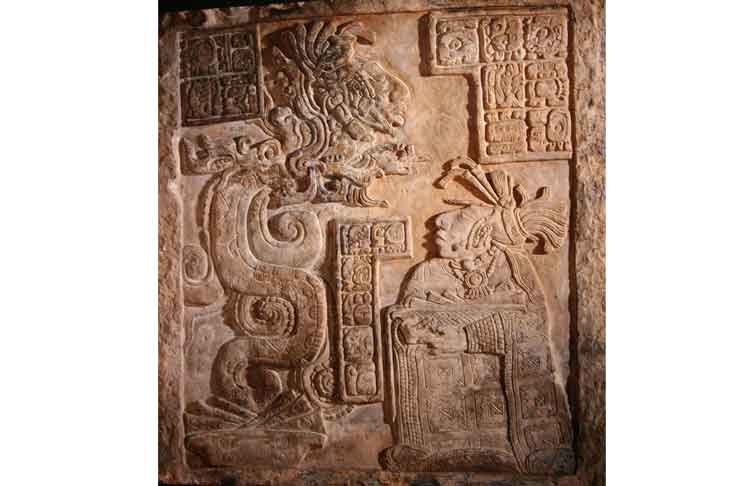By Jack Burns
Before I delve into one of the world’s most revered snakes, let me introduce to you one of my favorite TV episodes of ‘Austin Stevens Adventures’. Stevens is a remarkable South-African Snakemaster, as well as a wildlife photographer, who travels on assignment, documenting his activities finding and photographing snakes. During each episode, he usually searches for a specific species, while encountering a variety of other snakes along the way. In this fascinating episode Stevens travels all the way to Mexico to catch a glimpse of the Tzabcan rattlesnake, once hailed as a God by the ancient Mayans. Stevens, through the help of local guides and a shaman, crawls though underground rivers and dense rainforest in search of the most deadly snake in Mexico.
Its known as the Yucatecan Rattlesnake, the Crotalus tzabcan, or just Tzabcan, which means “Rattlesnake” in the Mayan language. As mentioned, the Tzabcan was highly revered by the Maya. One can still find carved rattlesnake forms on many Mayan temples, pieces of pottery and it’s the most prominent feature on the head dress of the Mayan Goddes of Herbs Ix Chel. However, its exact symbolic significance is still unknown to this very day. In the Austin Stevens video above you will see how a Shaman, based on ancient Mayan traditions, skins, dries and bakes the most deadly snake in Mexico, and then grinds and sifts it into a powder used as healing medicine. But more about that in a while.
The Tzabcan snake can reach 55-63 inch (140-160 cm), with a maximum length of 71 inch (180 cm). Its body has quite a rough appearance, due to its dorsal scale keels that are accentuated into tuberculations. Its vertebral scales are about as prominently keeled as the fourth row down on the flanks. This deadly snake can be found mainly in the Yucatan Peninsula on the Atlantic coast. Its venomous bites are quite similar to the bites of Rattlesnakes in north America, with severe local symptoms, pain, massive swelling, blistering, and even necrosis that might lead to amputations.
Magical Powers of a Deadly Snake

Like the Chinese, the Mayans believed, and still do today, in the healing powers of certain snake species. They have left behind a unique cure-all snake bone medicine called Cascabel, which is still used today by traditional healers.
Cascabel is the Spanish word for rattlesnake, which according to Mayan legends, is the source of one of the most potent medicines known to man. There are different variations of the Cascabel, depending on the rattlesnake, but the most healing powers have been attributed to the deadly Tzabcan, which according to Shamans – produces a much more potent strain of Cascabel.
Ancient Mayan texts revealed that when preparing a Cascabel – no agitated rattlesnake shall be used. It was believed that the anger in the snake causes changes in the medicine’s composition. Only docile rattlesnakes were acceptable. Most rattlesnakes, especially tropical species, are very quick, lean and aggresive snakes. The Tzabcan on the other hand – is an exception. His calm behavior has made him revered among the Mayans, as the snake with the godly healing powers.
So how can a Cascabel heal us from any disease? Well, according to the Mayans, it’s not about a healing powder for treating a disease, but an incredibly strong immune system enhancer that promotes healing for many different sorts of ailments. There are Shamans who claim they have successfully treated patients with severe burns, infections, ulcers, terminal diabetes and even AIDS and cancer. Many locals and foreigners who have taken the Cascabel have remained committed to it, while western scientists and doctors are usually skeptical towards anything that does not conform to western medicine.
According to the Mayan healing tradition, one spoon of Tzabcan snake powder every day will boost your immune system against most ailments, including malaria, dengue and others.


